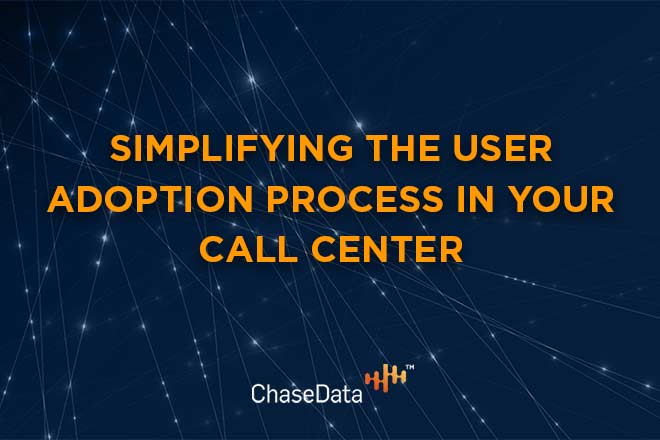Posted by on January, 30 2020 8:29 pm

The idea of new technology for your contact center can be exciting. Actually launching that technology? Not so much.
Why do so many call center managers balk at the idea of introducing new software and programs in their facilities? A big part of the reasons is because the user adoption process can be slow and arduous. Far too many centers suffer major declines in productivity and profitability due to problems implementing new technology.
If you want to bring your center up to date and up to speed with new software but don’t want to suffer through a problematic user adoption phase, check out these tips for smoothing things out:
Before you can address the often-complicated process of user adoption of new technology, you need to know what causes it. This can vary from center to center, but some of the most common issues are almost universal.
People dislike change. This is a problem in every field, in every position. While changes are necessary and updates or upgrades are generally a good thing, many people do not like having something that they already frequently use and understand well changed without their permission.
When the world of business came into the digital age, many older office workers retired. This shift in the American workforce was due largely to the resistance to change and the disdain that many more experienced employees had for new software and systems that were being introduced during this time. Those in the contact center industry are probably familiar with stories like these because this was one of the industries hit hardest by this shift as the way people had done their jobs at these facilities for decades suddenly began to change.
While we are a largely experienced society when it comes to the use of technology these days, we still see plenty of resistance to change in that technology from employees. This will always be true of workers who have been in a position longer; they get used to things working a certain way and feel comfortable and secure in their job knowledge and that is threatened when things abruptly change.
To compound this problem, management teams often make these significant changes as a result of wanting to push productivity and profitability further - all at the expense of the workers’ comfort. They also often make these changes without consulting the agents or those who will actually be at the forefront of implementing them. This is a major mistake. Not only does it create a lack of knowledge and foresight for the agents who are then expected to roll out these changes effectively, but it also leaves those agents feeling as if their thoughts and opinions do not matter to management.
Now that you know what complicates user adoption for many contact centers, you surely want to keep that from happening to your staff - but how? Here are a few ways to make the process easier and faster for your team:
Of course, one of the best ways to prevent problems with user adoption is to start with great technology. At ChaseData, we provide the latest advances in contact center technology, all with easy-to-use and intuitive design in mind. Your staff won’t be stuck in an endless loop of user adoption complications with our software solutions. Give us a call today to learn more about how we can help you simplify the process of upgrading your technology - and make this the year that your center moves forward for good!